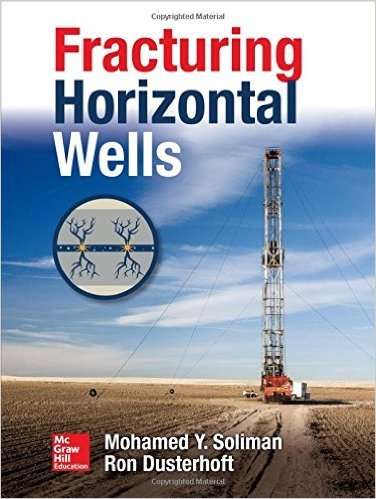"Fracturing Horizontal Wells" offers a comprehensive look at the process, from planning to production. Credit: McGraw Hill Education
Fracturing horizontal wells has had a profound impact on the U.S. oil and gas industry over the past 25 years, allowing production from fields once considered too marginal to produce. A new book, "Fracturing Horizontal Wells," translates that history and the lessons learned into a comprehensive look at the process, from planning to production.
Mohamed Soliman, chairman of the Department of Petroleum Engineering at the University of Houston, co-wrote the book with Ron Dusterhoft, technology fellow for Halliburton Energy Services.
"We look at the issues people worry about in fracturing and completion of horizontal wells," said Soliman, who joined the University this summer. "At the end, we address environmental issues, which have become very important, especially in areas plagued by drought."
Environmental issues weren't a factor when the first well was fractured in 1947. That was a vertical well, and the technique enjoyed a burst of popularity in the 1970s. But Soliman, who spent more than 30 years at Halliburton before entering academia in 2011, said even fractured vertical wells were unable to economically produce hydrocarbons from shale fields.
As chief reservoir engineer at Halliburton, Soliman was involved in the first fractured horizontal well, an experiment in the late 1980s that was funded by a number of oil companies interested in the research it yielded on drilling, logging, fracturing, cementing and other procedures. Soliman later published and presented the results at conferences around the world.
Oilman George Mitchell is credited with popularizing the technique in the Barnett Shale in North Texas several years later.
"Fracturing Horizontal Wells," published by McGraw Hill, is aimed at an industry audience, although Soliman said it is suitable for graduate petroleum engineering students who already have some knowledge of the technique. Among the topics covered are: fracture stimulation of horizontal wells, transitioning from vertical to horizontal wellbores, proppant and proppant transport, interval isolation, and horizontal completion fracturing methods and techniques.
Soliman, who holds 29 U.S. patents, has written a chapter in the textbook "Well Construction," chapters in World Oil's "Handbook of Horizontal Drilling and Completion Technology" and the Society of Petroleum Engineers monograph "Well Test Analysis of Hydraulically Fractured Wells," as well as serving as author or co-author of more than 200 papers.
Provided by University of Houston




















